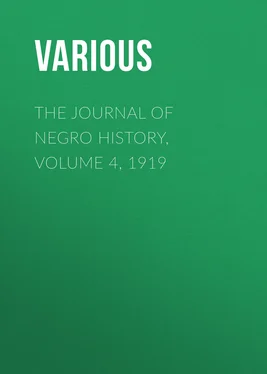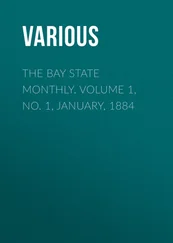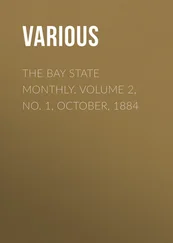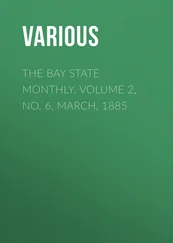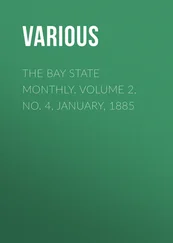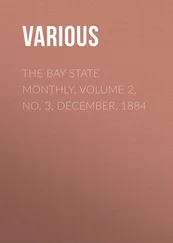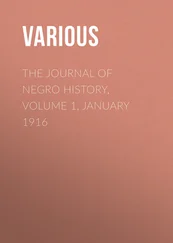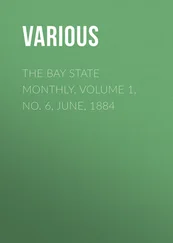Various - The Journal of Negro History, Volume 4, 1919
Здесь есть возможность читать онлайн «Various - The Journal of Negro History, Volume 4, 1919» — ознакомительный отрывок электронной книги совершенно бесплатно, а после прочтения отрывка купить полную версию. В некоторых случаях можно слушать аудио, скачать через торрент в формате fb2 и присутствует краткое содержание. Жанр: foreign_antique, periodic, История, foreign_edu, на английском языке. Описание произведения, (предисловие) а так же отзывы посетителей доступны на портале библиотеки ЛибКат.
- Название:The Journal of Negro History, Volume 4, 1919
- Автор:
- Жанр:
- Год:неизвестен
- ISBN:нет данных
- Рейтинг книги:5 / 5. Голосов: 1
-
Избранное:Добавить в избранное
- Отзывы:
-
Ваша оценка:
- 100
- 1
- 2
- 3
- 4
- 5
The Journal of Negro History, Volume 4, 1919: краткое содержание, описание и аннотация
Предлагаем к чтению аннотацию, описание, краткое содержание или предисловие (зависит от того, что написал сам автор книги «The Journal of Negro History, Volume 4, 1919»). Если вы не нашли необходимую информацию о книге — напишите в комментариях, мы постараемся отыскать её.
The Journal of Negro History, Volume 4, 1919 — читать онлайн ознакомительный отрывок
Ниже представлен текст книги, разбитый по страницам. Система сохранения места последней прочитанной страницы, позволяет с удобством читать онлайн бесплатно книгу «The Journal of Negro History, Volume 4, 1919», без необходимости каждый раз заново искать на чём Вы остановились. Поставьте закладку, и сможете в любой момент перейти на страницу, на которой закончили чтение.
Интервал:
Закладка:
The first, and perhaps the only distinctive institution which the Negro has developed in this country is the Negro church, and it is in connection with his religion that we may expect to find, if anywhere, the indications of a distinctive Afro-American culture. The actual conditions under which the African slaves were converted to Christianity have never been adequately investigated. We know, in a general way, that there was at first considerable opposition to admitting the Negro into the church because it was feared that it would impair the master's title to his slaves. History records too that the house servants were very early admitted to churches and that in many cases masters went to considerable pains to instruct those servants who shared with them the intimacy of the household. 85 85 The Society for the Propagation of the Gospel in Foreign Parts was founded in 1701 and the efforts to Christianize the Negro were carried on with a great deal of zeal and with some success.
It was not, however, until the coming of the new, free and evangelistic types of Christianity, the Baptists and the Methodists, that the masses of the black people, that is, the plantation Negroes, found a form of Christianity that they could make their own.
How eagerly and completely the Negro did take over the religion of these liberal denominations may be gathered from some of the contemporary writings, which record the founding of the first Negro churches in America. The first Negro church in Jamaica was founded by George Liele, shortly after the close of the Revolutionary War. George Liele had been a slave in Savannah, but his master, who was a Tory, emigrated to Jamaica upon the evacuation of that city. Andrew Bryan in Savannah was one of Liele's congregation. He was converted, according to the contemporary record, by Liele's exposition of the text "You must be born again!" About eight months after Liele's departure, Andrew began to preach to a Negro congregation, "with a few white." The colored people had been permitted to erect a building at Yamacraw, but white people in the vicinity objected to the meetings and Bryan and some of his associates were arrested and whipped. But he "rejoiced in his whippings" and holding up his hand declared "he would freely suffer death for the cause of Jesus Christ." Bryan's master interceded for him and "was most affected and grieved" at his punishment. He gave Bryan and his followers a barn to worship in, after Chief Justice Osbourne had given them their liberty. This was the origin of what was probably the first Negro church in America.
George Liele and Andrew Bryan were probably not exceptional men even for their day. The Rev. James Cook wrote of Bryan: "His gifts are small but he is clear in the grand doctrines of the Gospel. I believe him truly pious and he has been the instrument of doing more good among the poor slaves than all the learned doctors in America." 86 86 Journal of Negro History, Vol. I, 1916, p. 70.
The significant thing is that, with the appearance of these men, the Negroes in America ceased to be a mission people. At least, from this time on, the movement went on of its own momentum, more and more largely under the direction of Negro leaders. Little Negro congregations, under the leadership of Negro preachers, sprang up wherever they Were tolerated. Often they were suppressed, more often they were privately encouraged. Not infrequently they met in secret.
In 1787 Richard Allen and Absolom Jones had formed in Philadelphia the Free African Society, out of which four years later, in 1790, arose the first separate denominational organization of Negroes, the African Methodist-Episcopal Church. George Liele, Andrew Bryan, Richard Allen, and the other founders of the Negro church were men of some education, as their letters and other writings show. They had had the advantage of life in a city environment and the churches which they founded were in all essentials faithful copies of the denominational forms as they found them in the churches of that period.
The religion of the Negroes on the plantation was then, as it is today, of a much more primitive sort. Furthermore, there were considerable differences in the cultural status of different regions of the South and these differences were reflected in the Negro churches. There was at that time, as there is today, a marked contrast between the Upland and the Sea Island Negroes. Back from the coast the plantations were smaller, the contact of the master and slave were more intimate. On the Sea Island, however, where the slaves were and still are more completely isolated than elsewhere in the South, the Negro population approached more closely to the cultural status of the native African. The Sea Islands were taken possession of in the first years of the war by the Federal forces and it was here that people from the North first came in contact with the plantation Negro of the lower South. They immediately became interested in the manners and customs of the Island Negroes, and from them we have the first accurate accounts of their folk-lore and sayings.
Конец ознакомительного фрагмента.
Текст предоставлен ООО «ЛитРес».
Прочитайте эту книгу целиком, на ЛитРес.
Безопасно оплатить книгу можно банковской картой Visa, MasterCard, Maestro, со счета мобильного телефона, с платежного терминала, в салоне МТС или Связной, через PayPal, WebMoney, Яндекс.Деньги, QIWI Кошелек, бонусными картами или другим удобным Вам способом.
1
Cf. Chapter XVII, Nicolay and Hay, Abraham Lincoln, a History .
2
President Fillmore in his last message to Congress proposed a plan for Negro colonization and advocated its adoption. This part of his message was suppressed on the advice of his cabinet; but even had this not been done, there is no reason to suppose that the plan would have been adopted. President Buchanan made arrangements with the American Colonization Society for the transportation of a number of slaves captured on the slaver, Echo, in 1858.
3
Eulogy on Henry Clay, delivered in the State House at Springfield, Illinois, July 16, 1852. The quotation here noted is taken from a speech by Henry Clay before the American Colonization Society, 1827. Lincoln continued: "If as friends of colonization hope, the present and coming generations of our countrymen shall by any means succeed in freeing our land from the dangerous presence of slavery, and at the same time in restoring a captive people to their long lost fatherland with bright prospects for the future, and this too so gradually that neither races nor individuals shall have suffered by the change, it will be a glorious consummation." The Works of Abraham Lincoln , Federal Edition, edited by A.B. Lapsley, VIII, pp. 173-174.
4
"The political creed of Abraham Lincoln embraced among other tenets, a belief in the value and promise of colonization as one means of solving the great race problem involved in the existence of slavery in the United States.... Without being an enthusiast, Lincoln was a firm believer in Colonization." Nicolay and Hay, Abraham Lincoln—A History , VI, p. 354.
5
Speech at Peoria, Ill., in reply to Douglas. Life and Works of Abraham Lincoln , II, Early Speeches. Centenary Edition, edited by M.M. Miller. The Lincoln-Douglas Debates, October 16, 1854; p. 74.
Читать дальшеИнтервал:
Закладка:
Похожие книги на «The Journal of Negro History, Volume 4, 1919»
Представляем Вашему вниманию похожие книги на «The Journal of Negro History, Volume 4, 1919» списком для выбора. Мы отобрали схожую по названию и смыслу литературу в надежде предоставить читателям больше вариантов отыскать новые, интересные, ещё непрочитанные произведения.
Обсуждение, отзывы о книге «The Journal of Negro History, Volume 4, 1919» и просто собственные мнения читателей. Оставьте ваши комментарии, напишите, что Вы думаете о произведении, его смысле или главных героях. Укажите что конкретно понравилось, а что нет, и почему Вы так считаете.
